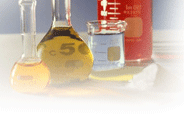Biocaxis > Products > Nucleoside |
|
|||||||||||||||||||||||||||||||||
|
|
||||||||||||||||||||||||||||||||||
 2-Chloroadenosine
2-Chloroadenosine
Catalog NO.: NS-009
| CAS NO.: 146-77-0 |
Brand: BIOCAXIS
Category
Nucleosides & Nucleotides, nucleobase
Synonyms:
AT-265-B; AT-265B; 6-Amino-2-chloropurine riboside;
(2R,3R,4S,5R)-2-(6-amino-2-chloro-9H-purin-9-yl)-5-(hydroxymethyl)tetrahydrofuran-3,4-diol;
2-Chloro-9-(beta-D-ribofuranosyl)adenine;
2-Chlor-9-(β-D-ribofuranosyl)-9H-purin-6-amine;
2'-Chloroadenosine
2-CADO, 6-Amino-2-chloropurine riboside
Molecular Formula
C10H12ClN5O4
Molecular Weight
301.69
General description
2-Chloroadenosine is a nucleoside antibiotic produced by
Streptomyces rishiensis. It has anti-gram-positive
and negative bacteria activity.
2-Chloroadenosine, a stable adenosine analogue, protects
against long term development of ischaemic cell loss
in the rat hippocampus. 2-Chloroadenosine is an apparent competitive inhibitor
of uridine influx (apparent Ki=33 μM) and
high-affinity nitrobenzylthioinosine binding
(apparent Ki=0.18 mM). 2-Chloroadenosine is a transported permeant for the
nucleoside transporter in human erythrocytes.
2-Chloroadenosine has been used:
as an agonist of adenosine receptors (A1R) in dorsal
hippocampus (DH) and ventral hippocampus (VH) of mice
as a component of artificial cerebrospinal fluid (aCSF) for electrophysiological experiments using
hippocampal slices
as an internal standard in solid phase extraction coupled
with liquid chromatography-tandem mass spectrometry (XLC-MS/MS) for the
quantification of certain metabolites from axonal lysates and dorsal root
ganglia (DRG) neurons
Biochem/physiol Actions
2-Chloroadenosine is an analog of adenosine.[4] It is an
adenosine A1 receptor agonist.[5] It might possess anti-oxidant property.[6]

